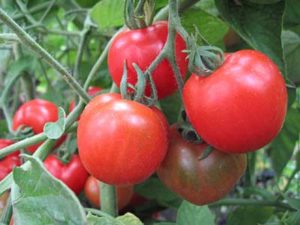
Tomatoes for the Northeast
By Tom Christopher
Memorial Day weekend is the traditional time to plant tomatoes in the cooler parts of the Northeast, and for good reason. It’s only recently that in an average year, the weather has begun to suit this warm-weather crop. Tomatoes originated in the subtropics and although they may survive lower temperatures, they don’t grow well if daytime temperatures dip below 60°F., and night-time below 55°F. Equally important is soil temperature: it should be at least 60°F. I’ve found that planting tomatoes earlier on my chilly, USDA zone 5 hilltop doesn’t result in bigger plants in the long run – seedlings I set out prematurely just sulk until the weather warms, and are likely during this period of reduced vigor to contract diseases.
Because our planting time comes relatively late, large-fruited tomatoes and plum tomatoes may not ripen fruit successfully in northern gardens. On the contrary, your best ticket to an abundant harvest is to plant fast-maturing types of tomatoes such as ‘Early Girl’, or even types specifically bred for cool climates. My favorite is ‘Stupice’, a Czech heirloom that starts producing its full-flavored, 2-inch fruits as early as 60 days after the seedlings are transplanted to the garden. I’ve also had success with ‘Glacier’ which also produces small but flavorful fruit even earlier, sometime around 55 days after transplanting to the garden. I like ‘Glacier’ for sauce-making because it is a determinate type, which means that it yields the bulk of its harvest all at once, over a period of a couple of weeks. Cherry-type tomatoes are also a good bet for short-season gardens. I harvested a bumper crop of sweet-fruited ‘Sungolds’ last year and I intend to grow them again this year.
Whatever types of tomatoes you choose to grow, though, make sure you give them full sun; a south-facing or west-facing location is always best, especially in cooler climates. If you can’t satisfy that requirement except in your front yard, don’t worry. Tomatoes make outstanding decorative plants. In fact, when they first arrived in northern Europe they were commonly thought to be poisonous and were only included in the garden for ornamental purposes.
Brie Arthur has some advice on that. This North Carolina gardener specializes in tomatoes. This year, she is growing 50 different types (for a total of 80 plants) in her suburban yard. “A well-grown tomato,” she says, “is one of the prettiest plants you’ll ever see.” She likes to set them by deciduous shrubs – a ‘Limelight’ hydrangea, a weigela, or any large flowering shrub that grows in full sun. Instead of confining the tomato vines in a cage, she lets them ramble up through the shrub, using its branches as “living stakes.”
I can also imagine a red-fruited tomato neatly trained on a tripod of bamboo stakes as the centerpiece of a flower bed, or a row of trellised tomatoes to mark the border of a garden. For more ideas, you should consult Brie’s excellent new book, The Foodscape Revolution. Or check out her website at https://www.briegrows.com.
Be-a-Better-Gardener is a community service of Berkshire Botanical Garden, one of the nation’s oldest botanical gardens in Stockbridge, MA. Its mission to provide knowledge of gardening and the environment through 25 display gardens and a diverse range of classes informs and inspires thousands of students and visitors on horticultural topics every year. Thomas Christopher is the co-author of Garden Revolution (Timber press, 2016) and is a volunteer at Berkshire Botanical Garden. berkshirebotanical.org.
Caption: ‘Stupice’, a Czech heirloom tomato that starts producing its full-flavored, 2-inch fruits as early as 60 days after the seedlings are transplanted to the garden.


